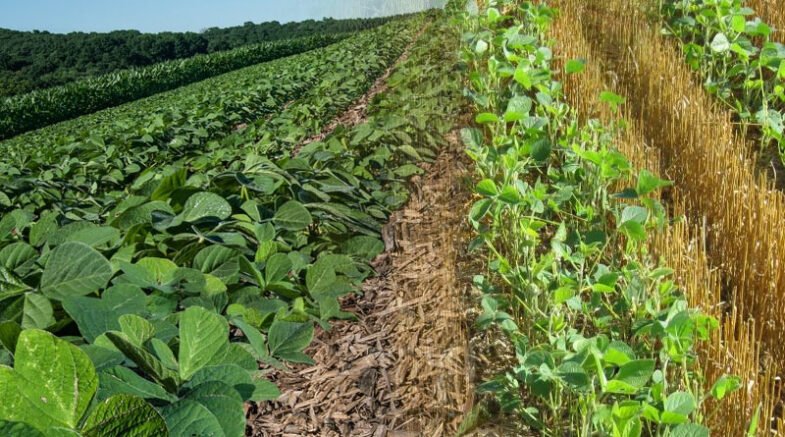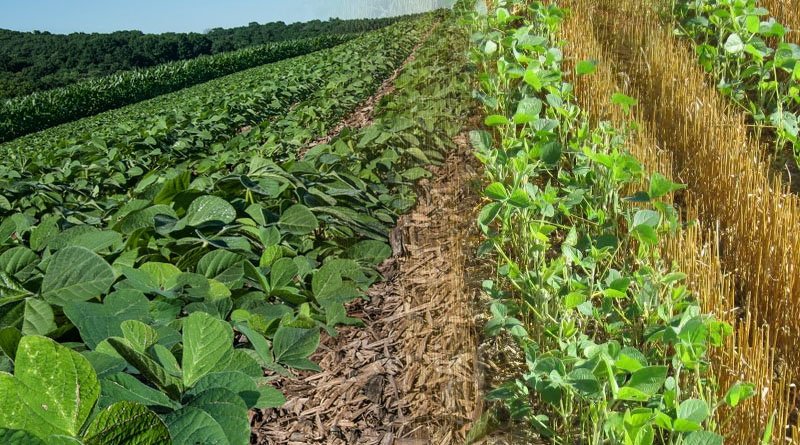Soybean is a leguminous crop that has the unique ability to fix nitrogen from the air and convert it into a form that plants can use.

Intercropping is an agricultural practice that involves the simultaneous cultivation of two or more crops on the same land. The primary objective of intercropping is to optimize the use of resources such as sunlight, nutrients, water, and space, thereby increasing crop productivity and enhancing soil health. In recent years, intercropping has gained immense popularity among farmers, particularly in soybean farming.
Soybean is a versatile crop that is grown for its high protein content, oil, and other byproducts. It is a vital source of protein for both humans and livestock, and its demand continues to grow globally. However, soybean farming is not without challenges, including pests and diseases, soil degradation, and limited land availability, among others.
Intercropping in soybean farming presents a sustainable and profitable solution to these challenges. By planting soybeans alongside other crops, farmers can improve soil fertility, reduce pest and disease incidence, and increase crop yield. Below are some of the key benefits of intercropping in soybean farming.
Improved Soil Health:
Soybean is a leguminous crop that has the unique ability to fix nitrogen from the air and convert it into a form that plants can use. However, soybeans may not be able to fix enough nitrogen to meet its demand, particularly in soils that are deficient in minerals.
Intercropping with leguminous crops such as cowpea, groundnut, or pigeon pea can help address this challenge. These crops also fix nitrogen, and their residues enrich the soil with essential nutrients.
In addition, intercropping with non-leguminous crops such as maize or sorghum can help break soil compaction and enhance soil structure, which improves water infiltration and retention.
Pest and Disease Management:
Intercropping in soybean farming can help reduce pest and disease incidence by disrupting the habitat and breeding cycles of pests and diseases. For instance, planting soybean alongside maize or sorghum can help reduce infestations of soybean aphids, a common pest that feeds on soybean leaves, reducing plant growth and yield.
Intercropping with aromatic plants such as marigold, basil, or mint can also help repel insect pests, as these plants contain natural chemicals that repel or deter pests.
Increased Crop Yield:
Intercropping in soybean farming can significantly increase crop yield, particularly in areas with limited land availability. By optimizing the use of resources such as sunlight, water, and nutrients, farmers can produce more crops per unit area than in monocropping. For instance, intercropping soybean with maize can increase soybean yield by up to 30%, while also producing a maize crop.
In addition, intercropping can help diversify farm income, as farmers can sell the additional crops produced, increasing their overall profitability.
Conclusion:
Intercropping in soybean farming presents a sustainable and environmentally friendly alternative to conventional farming practices. By reducing the use of synthetic fertilizers and pesticides, intercropping can help reduce environmental pollution and protect the health of farmers and consumers.
Intercropping can also enhance biodiversity on the farm by promoting the growth of different crops and attracting beneficial insects and wildlife, which can help improve pollination and pest control.
In conclusion, intercropping in soybean farming presents a sustainable and profitable solution to the challenges facing farmers today. By planting soybeans alongside other crops, farmers can improve soil fertility, reduce pest and disease incidence, increase crop yield, and enhance environmental sustainability.
However, to reap the full benefits of intercropping, farmers must carefully choose the crops to intercrop, their planting arrangement, and timing, as well as proper management practices such as weeding, pruning, and irrigation. With proper planning and management, intercropping in soybean farming can help farmers.

Very informative article appreciate the effort